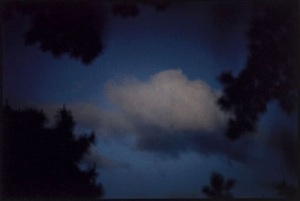 Bill Henson: cloud landscapes brings together works that traverse the oeuvre of the renowned Australian photographer in order to give insight into the shifts and continuities in his expansive career. Cloud landscapes will showcase recent works from the Art Gallery’s collection alongside a small selection from the Paris Opera Project and the early “Mahler” series.
Bill Henson: cloud landscapes brings together works that traverse the oeuvre of the renowned Australian photographer in order to give insight into the shifts and continuities in his expansive career. Cloud landscapes will showcase recent works from the Art Gallery’s collection alongside a small selection from the Paris Opera Project and the early “Mahler” series.
This aims to highlight Henson’s sustained interest in depicting landscapes as well as figures, displaying them together to reveal the equal importance the artist places on seemingly disparate aspects of his practice.
Born in Melbourne in 1955, Bill Henson’s work has been extensively exhibited in Australia, the USA, Europe and Japan. He represented Australia at the Venice Biennale in 1995. Emphatically self-sufficient, Henson takes and prints everything himself, a habit that he has maintained from the early days right through to his recent transition to digital printing.
Although all his work is still shot on film, Henson has mastered a digital printing technique that produces images indistinguishable from the earlier dark-room hand prints, as the exhibition will elucidate.
The Art Gallery held a large survey show in 2004-5 which covered 30 years of Henson’s work and traced a trajectory from his first series through to his then most recent works. Now, with the advent of the Photography Gallery, a different take on Henson’s work can occur, allowing the highly nuanced changes in colour and motifs over the last 20 years to be fully apprehended. The most recent acquisitions will be on view.
Henson’s brooding blacks, which he combines with reliefs of colour and bright light to often disquieting effect, are signatures that can be seen across varied themes and subjects. Take some of his earlier pieces, the Paris Opera Project of the early 1990s and the “Mahler” series, which was started in 1976 and is unfinished.
The latter was made when he visited late-romantic composer, Gustav Mahler’s second composing hut at Maiernigg, on the shores of the Wörthersee in Carinthia, Austria, while the Paris Opera Project was commissioned by the Opera at Bastille to celebrate the opening of that new building. The inclusion of photographs from these two earlier series in the exhibition Cloud landscapes emphasises the importance of music to Henson and his work.
Some of the 2009/10 pictures were taken at the Hermitage Museum, St Petersberg, Russia and tend toward the dissolution of the body to the extent that the direction of the various glances and gestures become almost abstract. They are less about suggesting faces and bodies, parts which form wholes, than they are about a field of various signifiers, which seemingly reference art itself and the ceaseless pursuit of looking and understanding. There is undoubtedly a magical element to Henson’s photography.
As Henson himself said in an interview with art critic Sebastian Smee in 2004, In some respects not even being able to see the whole structure is partly what the work is about – the way in which things go missing in the shadows. Shadows can animate the speculative capacity in the viewer in a way that highlights can’t.
One of the great things about photography is that it carries this evidential weight – an evidential authority – while at the same time remaining completely abstract. It’s often, to my way of thinking, what you don’t see in the photograph that has the greatest potential to transmit information.
The consistency in Henson’s work seems to be his musing on the infinite capacity of imagination and indeed the likelihood that depicting what-we-cannot-see (namely, the dark) induces imaginative states or reveries.
Bill Henson: cloud landscapes
Art Gallery of New South Wales – Art Gallery Road, The Domain, Sydney
Exhibition: 30 May – 22 September 2013
Free admission
For more information, visit: www.artgallery.nsw.gov.au for details.
Image: Bill Henson (Australia b1955) Untitled 2005/06, type C photograph, 104 × 155 cm, purchased with funds provided by the Photography Collection Benefactors Program 2006.


Be the first to comment